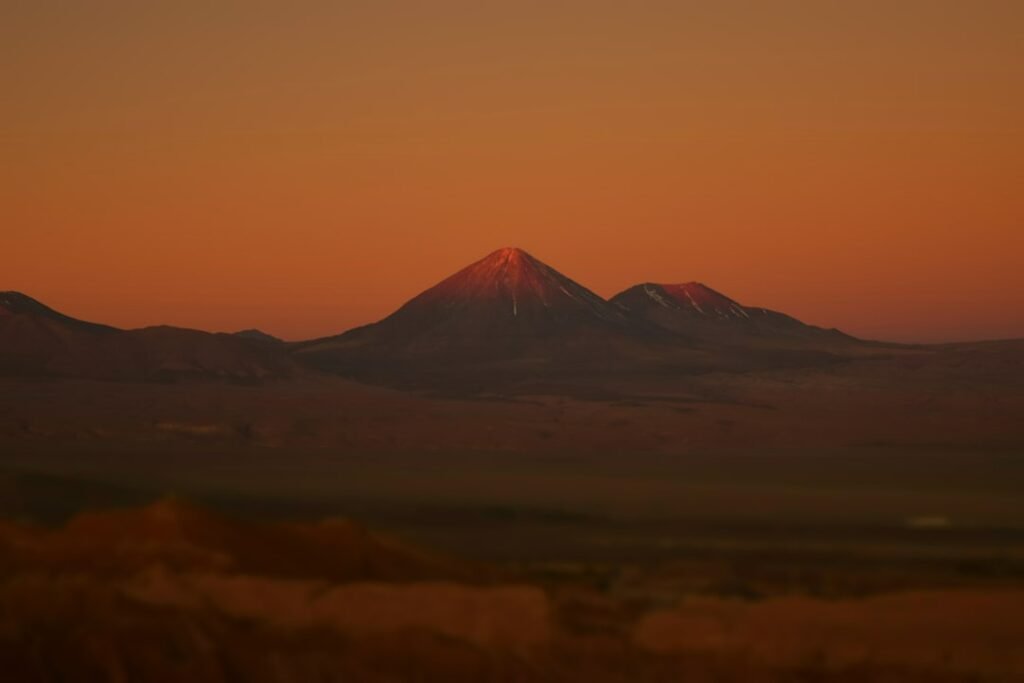Imagine stepping into a misty, ancient Irish forest, the ground trembling beneath your feet as a colossal shape emerges between the twisted oaks. Towering above the undergrowth, with antlers stretching wider than a modern car is long, stands a creature so majestic and unreal it feels like myth brought to life. This is not a legend spun by old storytellers, but the true story of the Irish elk—a magnificent giant deer that once ruled the Emerald Isle and much of Eurasia. Its rise, reign, and mysterious disappearance continue to captivate scientists and dreamers alike, leaving behind haunting echoes of a world lost to time.
A Giant Among Deer
The Irish elk, scientifically known as Megaloceros giganteus, was not just another deer—it was the largest deer to ever walk the earth. Standing up to seven feet tall at the shoulder, this animal dwarfed today’s largest deer species. Its most striking feature was the enormous antlers, which could span up to twelve feet from tip to tip. These antlers were as heavy as a grown man, weighing up to eighty pounds. For people living during the Ice Age, witnessing such a creature in the wild must have felt like seeing a piece of living folklore, a beast straight from the heart of a fairytale.
Not Truly Irish, Not Really an Elk

Despite its name, the Irish elk was neither exclusively Irish nor an elk by scientific standards. The misnomer stems from the fact that some of the best-preserved fossils were first found in Irish peat bogs, sparking fascination and mystery. In reality, the species ranged across much of Europe and Asia, thriving in diverse habitats from grassy plains to dense woodlands. And while it is called an “elk,” the Irish elk was more closely related to modern fallow deer than to the elk or moose found in North America today.
The Marvel of Antlers
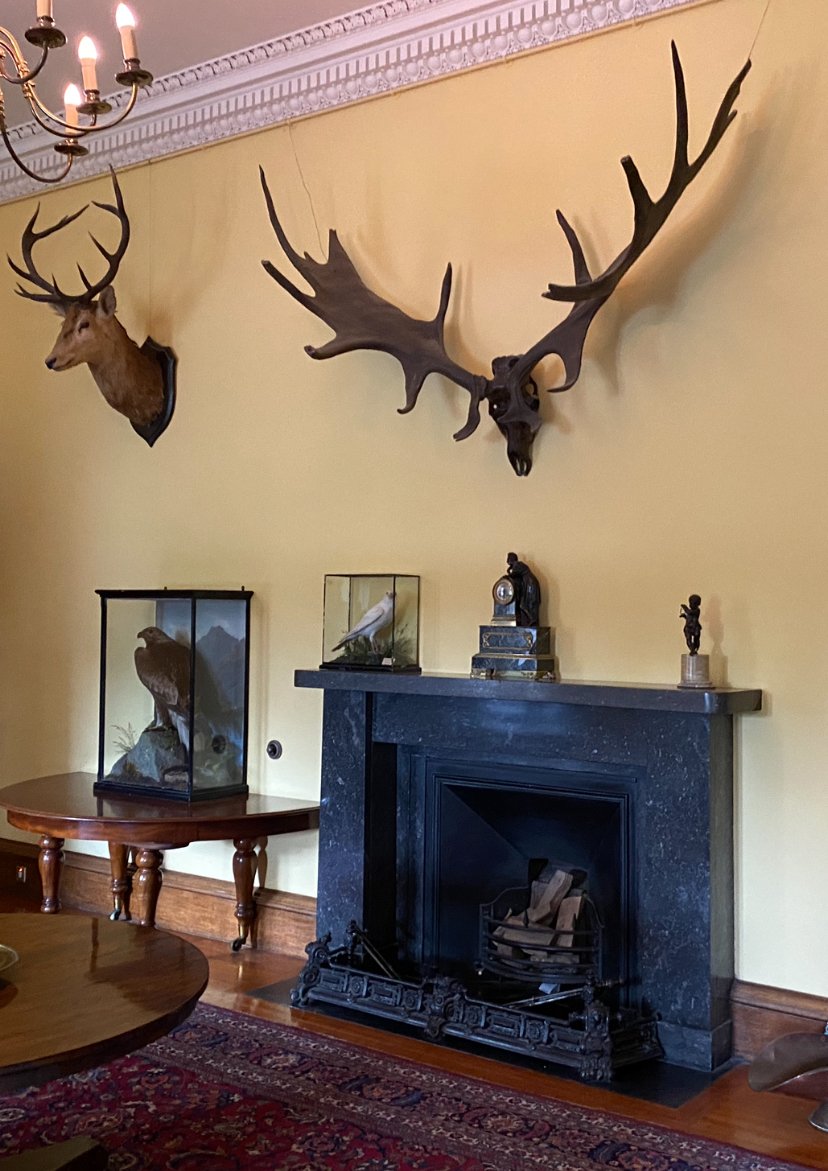
The antlers of the Irish elk are the stuff of legend. Reaching up to twelve feet across, they were the largest antlers of any known deer. Growing these spectacular structures each year required incredible amounts of energy and nutrition, especially calcium and phosphorous. During the rutting season, males would clash their massive antlers in dramatic battles for dominance and the right to mate. These epic duels were both displays of power and tests of strength, echoing through the ancient forests and grasslands.
Life During the Ice Age
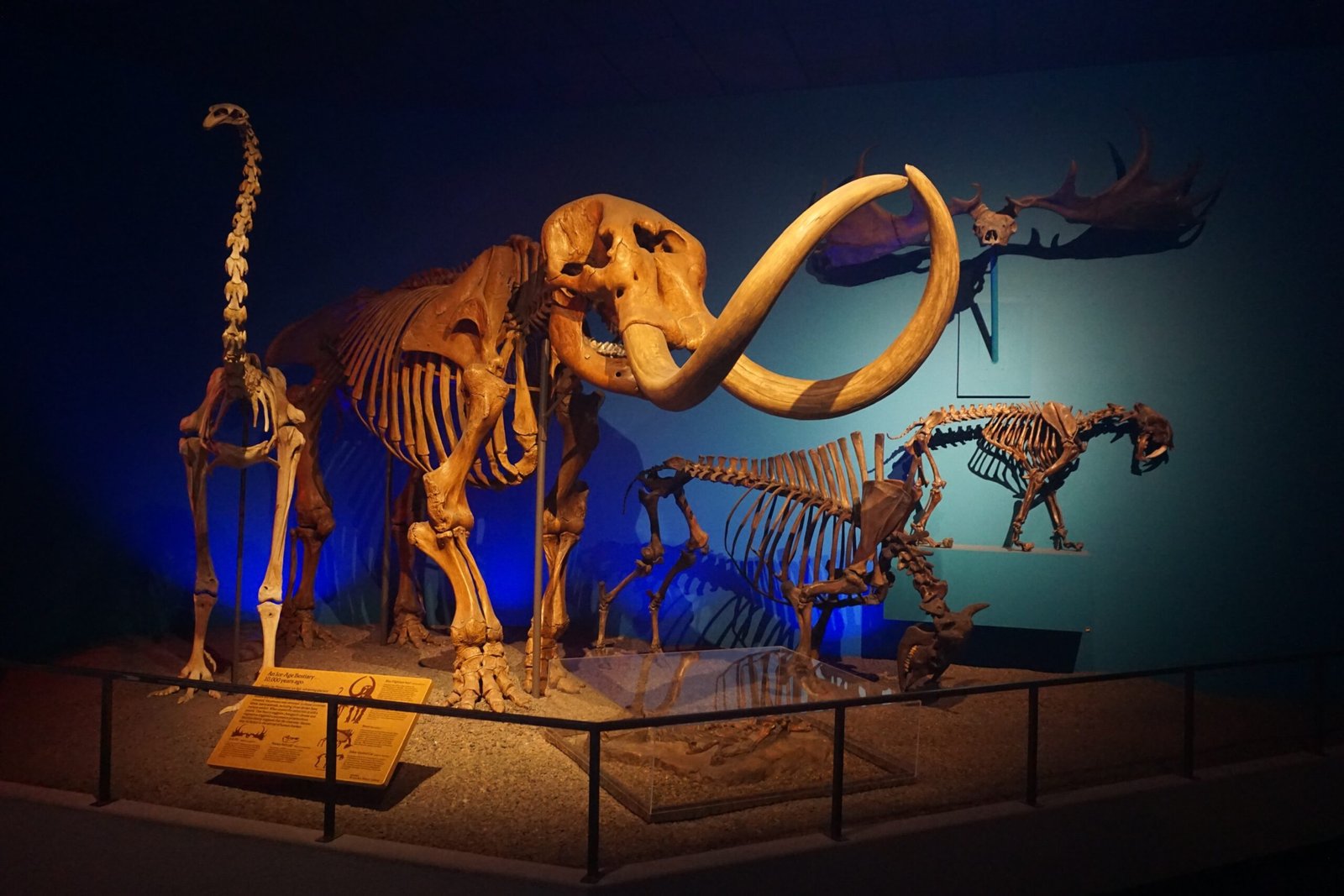
The Irish elk thrived during the late Pleistocene, a time when enormous glaciers covered much of the northern world. These giants roamed alongside mammoths, woolly rhinoceroses, and saber-toothed cats. The landscape was harsh and ever-changing, with bitterly cold winters and brief, bountiful summers. The diet of the Irish elk consisted mainly of grasses and other vegetation, and their wide antlers may have helped them deal with the tall, open landscapes of the time, giving them an edge in both display and defense.
Masters of Adaptation
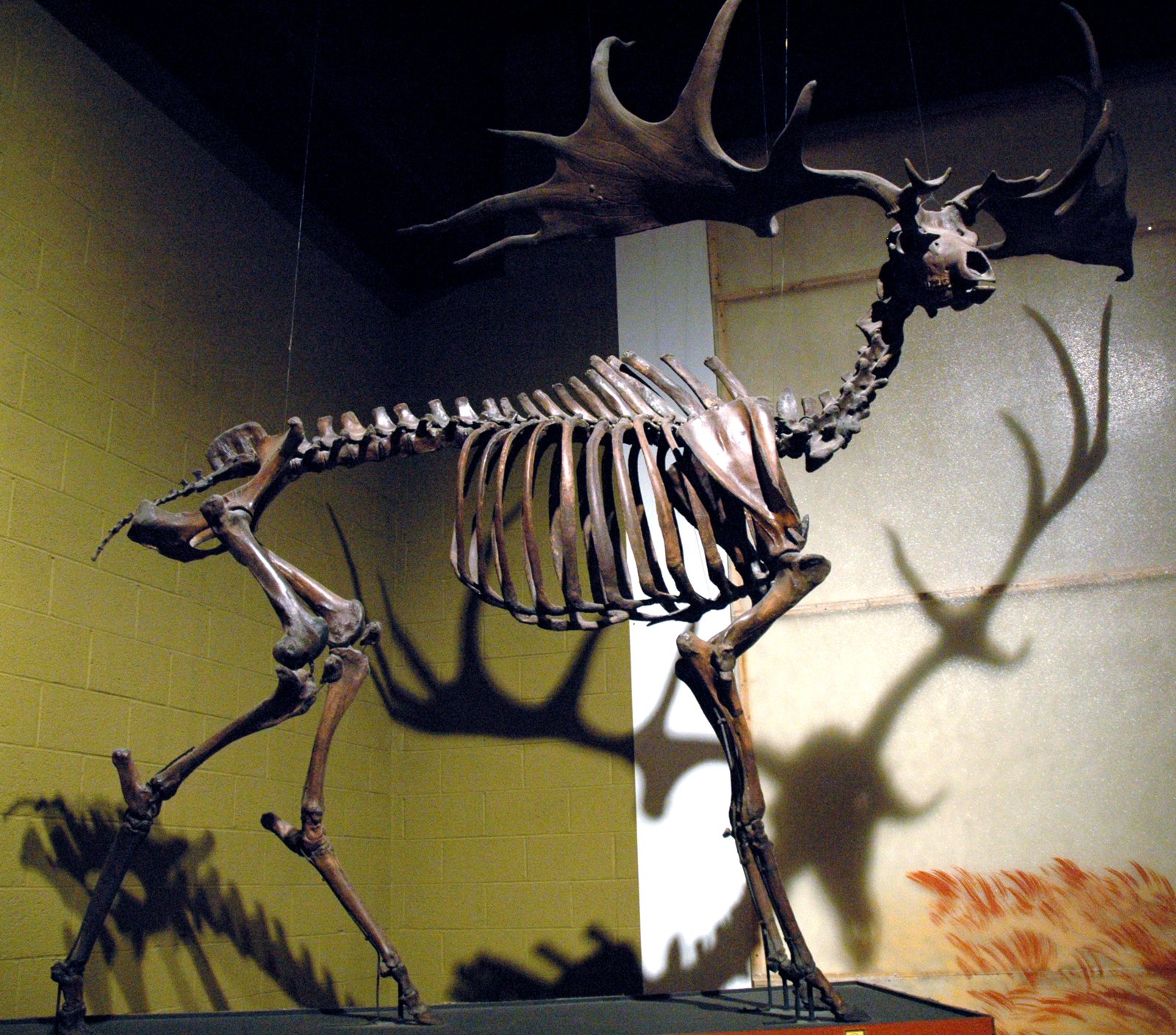
Survival during the Ice Age was no small feat. The Irish elk’s tall stature and powerful legs allowed it to move easily across snowy plains and marshy ground. Its thick fur provided insulation, while its keen senses helped it avoid predators. Yet, the very features that made it so impressive—especially those enormous antlers—also demanded more food and energy. In times of abundance, these demands were met. But when food grew scarce, survival became a daily struggle.
The Mystery of Extinction

One of the greatest puzzles surrounding the Irish elk is the question of why it vanished. For many years, scientists believed its gigantic antlers were to blame, suggesting that the weight and energy required to grow them became too much as climates changed and food sources dwindled. Others argue that rapid climate shifts at the end of the Ice Age altered habitats, leaving the Irish elk with fewer places to thrive. Human hunters, expanding across Europe, may have also played a role, competing for the same resources or hunting the Irish elk directly. The answer remains elusive, adding a layer of intrigue to this ancient giant’s story.
Fossils: Windows Into the Past
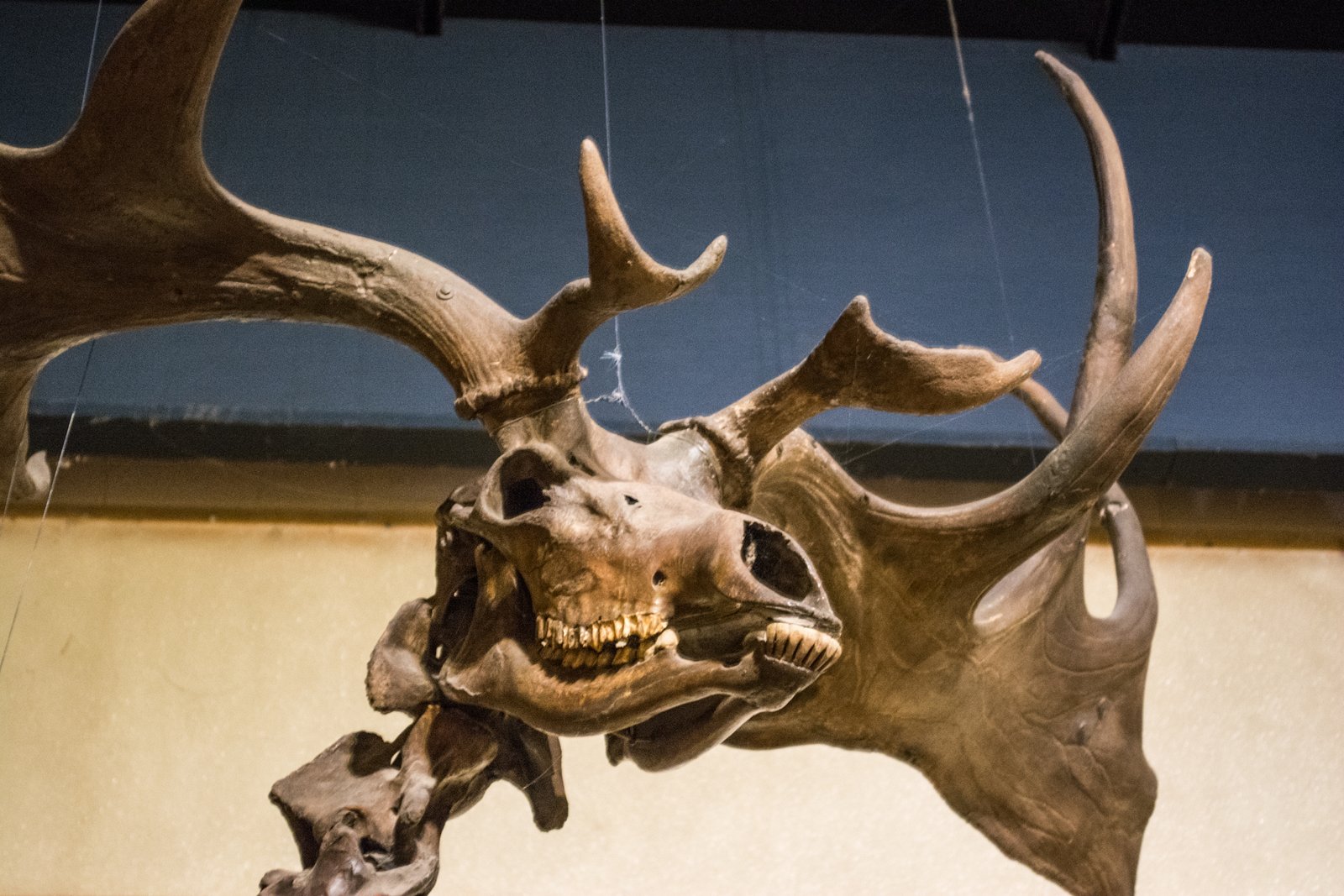
The bogs and lakes of Ireland have yielded some of the most spectacular Irish elk fossils ever found. These fossils are often astonishingly well-preserved, with complete skeletons and intact antlers that allow scientists to reconstruct the animal’s appearance with remarkable detail. Museums across Ireland and Europe proudly display these remains, drawing crowds eager to marvel at the scale and beauty of the extinct giant. Each fossil is a silent witness to a vanished era, reminding us how much of the world’s history is locked away beneath our feet.
Legends and Inspiration

The Irish elk has inspired myths, legends, and art for centuries. In ancient Ireland, the discovery of huge antlers in peat bogs fed into tales of supernatural beasts and mighty warriors. Even today, the image of the Irish elk appears in literature, paintings, and sculptures, symbolizing both the grandeur of the natural world and the fragility of existence. Its story continues to spark the imagination, stirring awe and wonder in everyone who encounters its fossilized remains.
What Remains Today
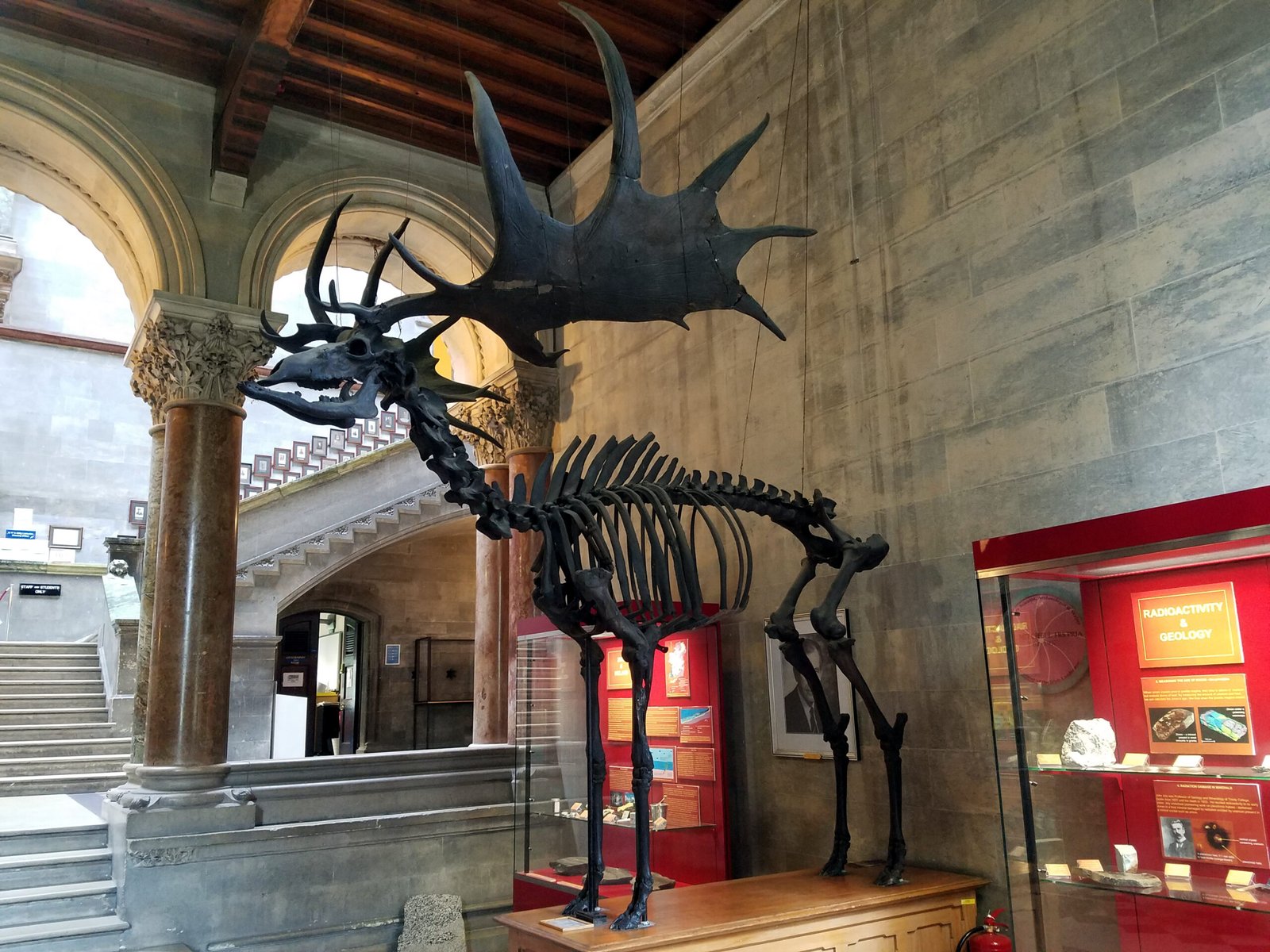
Though the Irish elk is long gone, its legacy lives on. The landscapes it once roamed are now home to modern deer species, but none can match its sheer size or majesty. Scientists continue to study its bones, searching for answers about how such a magnificent animal lived and died. New discoveries, such as DNA analysis and advanced imaging techniques, are shedding light on its relationships to living deer and its adaptation to past environments. The Irish elk remains a powerful symbol of nature’s ability to create—and lose—wonders.
A Glimpse Into Our Own Future

The rise and fall of the Irish elk is not just a story from prehistory; it is a powerful reminder of how fragile life can be. Changing climates, shifting habitats, and the impact of human activity shaped the destiny of this giant deer, just as they shape the fate of animals today. Its extinction invites us to reflect on our own role as stewards of the planet, urging us to cherish and protect the diversity of life that still exists. In the silent halls of museums and the wild places of Ireland, the Irish elk’s story continues to echo—an invitation to wonder, to learn, and to never take our living world for granted.



